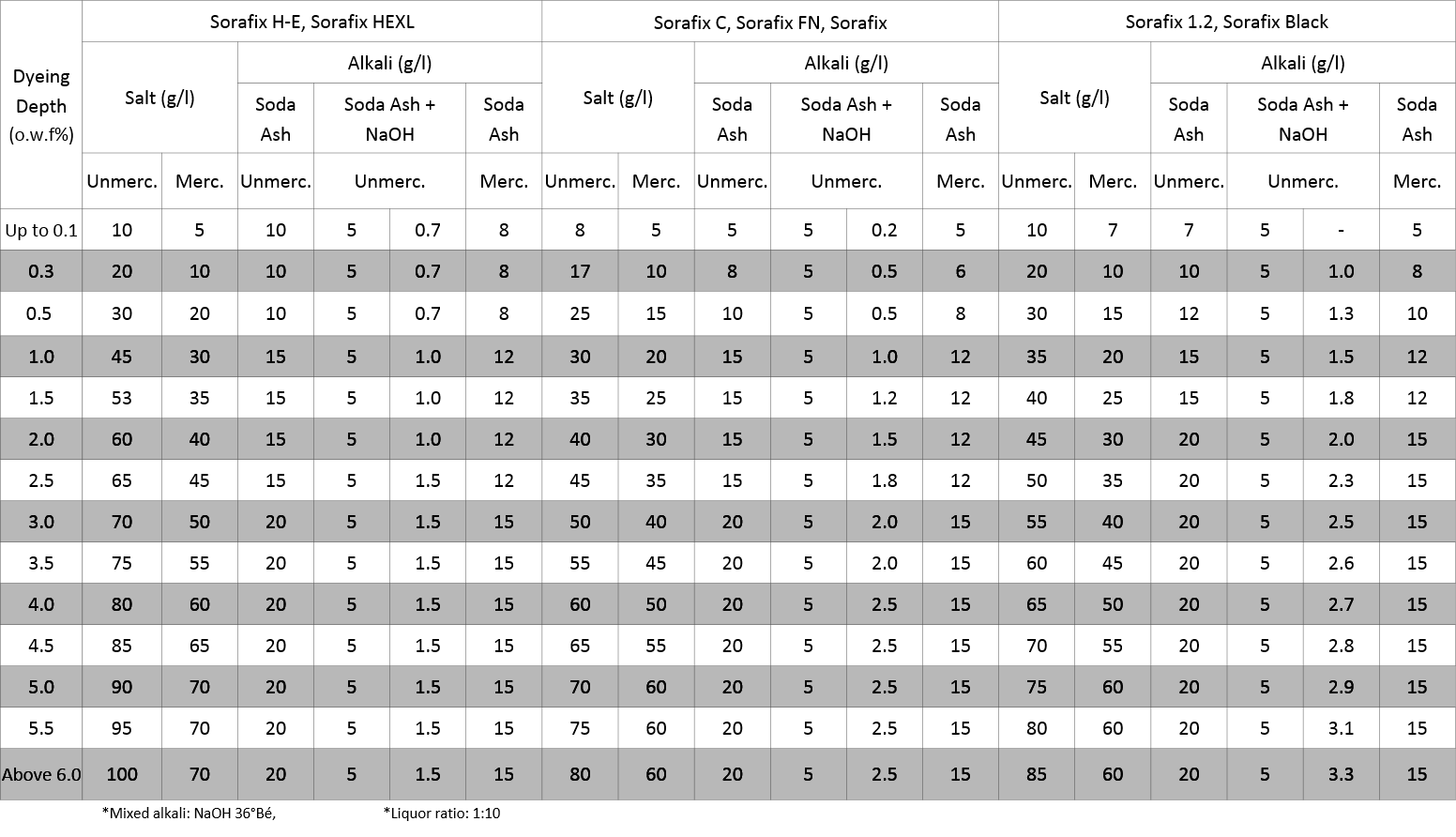How to Get the Best Reactive Dyeings with Long Liquor Ratios
HOW TO IMPROVE EFFICIENCY WHEN DYEING FIBER REACTIVES ON CELLULOSE AT LONG LIQUOR RATIOS
As discussed in a previous post on reducing variables in fiber reactive dyeing, a lower liquor ratio between 1:6 – 1:8 gives the best dye yield. Yet, certain pieces of dyeing equipment and processes can make this impossible. Some liquor ratios will be within 1:15 – 1:25. How do we get the best results under these conditions?
Substrate Preparation
We must clean a substrate of impurities, dirt, waxes, oils, and minerals to guarantee absorbency. It’s here in the soaping and scouring process that a higher liquor ratio will actually be beneficial.
We want to use a low-foaming wetting agent and detergent. Both should have an emulsifying and extraction action with alkali. Using these at high temperatures gives us the best results. Typical formulations include:
Alkaline Boil-Off:
Sora Scour LF-MD: 0.5 – 2.0 g/l
NaOH 50%: 0.5 – 2.0 g/l
Temperature: 190 – 225°F
Time: 25 – 30 minutes
Bleaching for Dyeing:
Sora Scour LF-MD: 0.5 – 2.0 g/l
Sora Stabilizer CP: 1.0 g/l
NaOH 50%: 1.5 – 3.0 g/l
H2O2 50%: 3.0 – 6.0 g/l
Temperature: 205 – 230°F
Time: 30 – 60 minutes
After these procedures, follow with at least a hot rinse at 160 – 180°F and a warm rinse at 120 – 140°F. Make sure the substrate’s pH is neutral before dyeing.
Dyeing Process
Pay mind to these three key variables as you process the dyeing:
Dye Selection
Whenever possible, use dyes that have newer chemistries for best results. The older ranges, like vinyl sulfone and monochlorotriazine, tend to give lower yield at longer liquor ratios. The new dye chemistries are either multi-functional and/or poly-functional. This gives a higher yield at higher liquor ratio in comparison. These dyes have less hydrolysis since they have more than one reactive mechanism. Sorafix SS and Sorafix MF-D Reactive Dyes are examples of products available through FSW.
Salt Concentration Levels
Alkali and Electrolyte (Salt) concentration must be carefully monitored. A Salometer is an essential tool to confirm that electrolyte concentration is correct. You can also use the Salometer to calculate the liquor ratio of the dyeing equipment. Many times the liquor ratio is higher than anticipated.
The recommended alkali and electrolyte from our Sorafix Reactive Dye brochure is below. These are minimal guidelines for electrolytes. In dark shades containing more than 7 – 8% dye, you may need as much as 120 g/l of electrolyte.

Track Temperature
Use either the temperature rise or constant temperature procedure depending on dyeing equipment and process controllers.
Rinsing and After Soaping
Here again, the higher liquor ratio is beneficial to remove unfixed dye, electrolyte, and alkali. The actual procedure, including the number of rinses and soaping baths, depends on the depth of shade and reactive dye chemistry used to match the shade.
This is a general recommendation for rinsing when using medium and dark shades:
- Drop dye bath
- Rinse at 120 – 140°F for 10 – 12 minutes, drop
- Rinse at 140 – 160°F for 10 – 12 minutes, drop
Soaping
This soaping recommendation uses Soralon RRW Concentrate:
- Soralon RRW Concentrate: 0.5 – 1.5 g/l
- Acetic Acid at pH 6 – 7
- 160°F for 10 – 12 minutes, drop
- Rinse at 160°F for 10 – 12 minutes
- If there is any excessive color in the bath, drop and repeat soaping and this rinse
- Drop
- Rinse at 120°F, unload
More detailed information on rinsing and soaping is available on the Soralon RRW Conc Technical Data Sheet.

As always, there are many factors that influence dye yield and levelness. These recommendations can provide outlines for you to be more efficient when reactive dyeing fibers at long liquor ratios.


